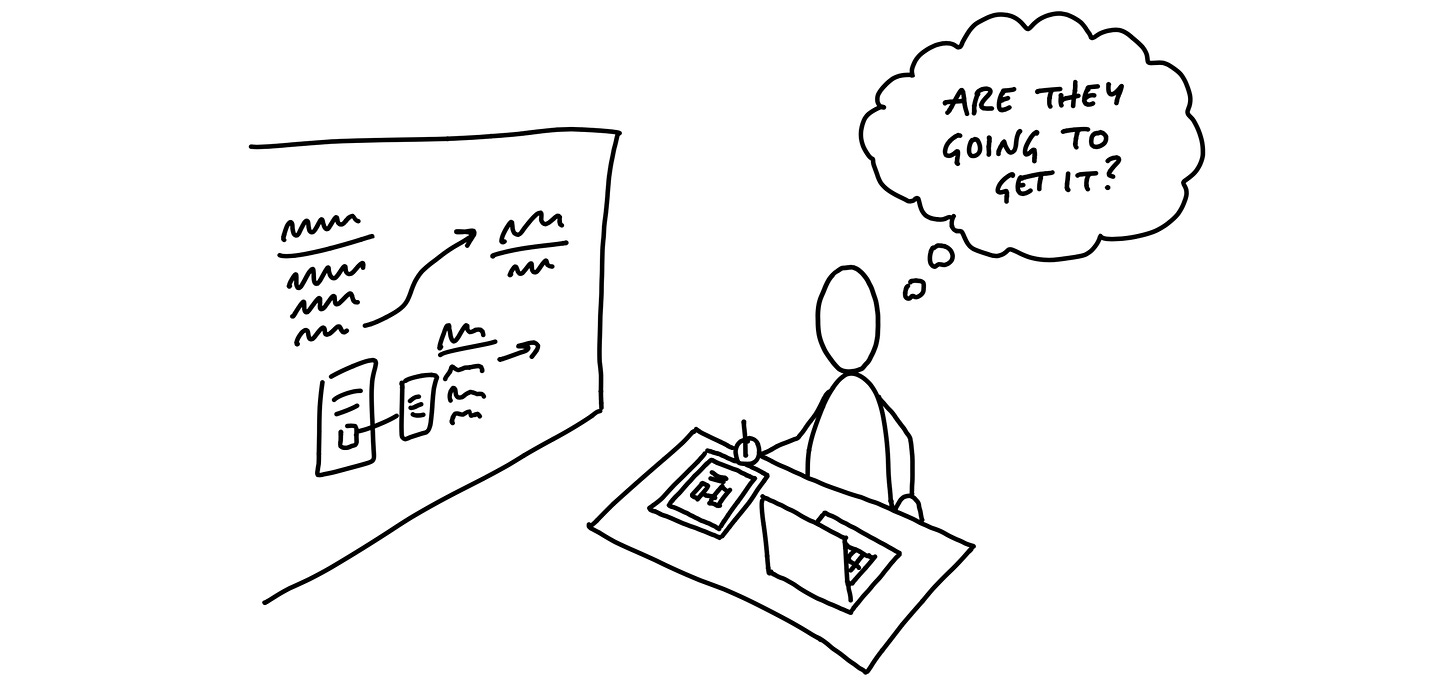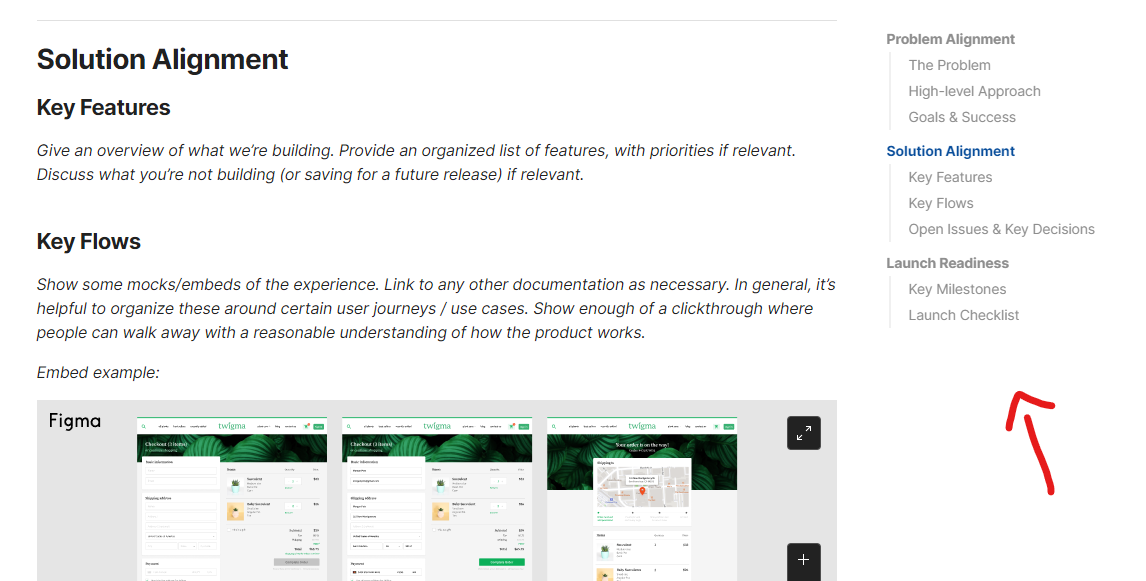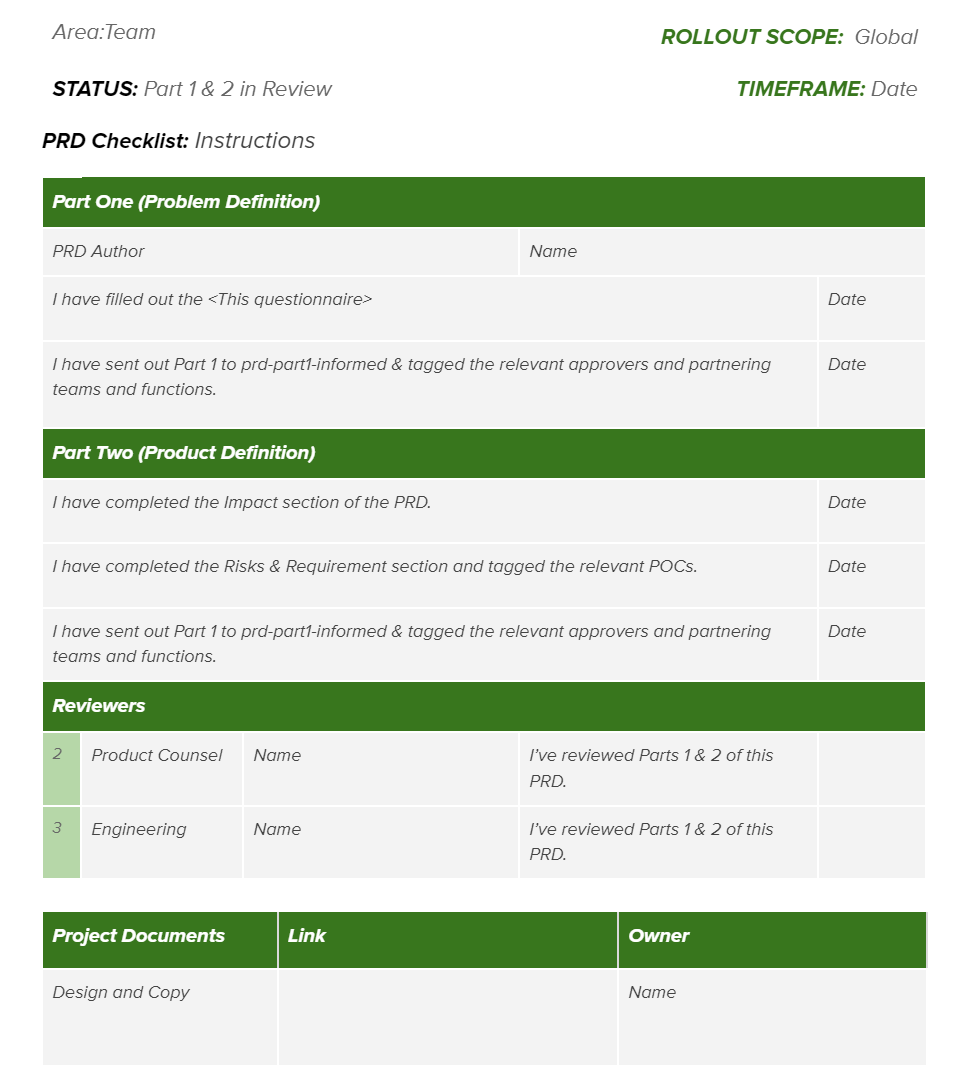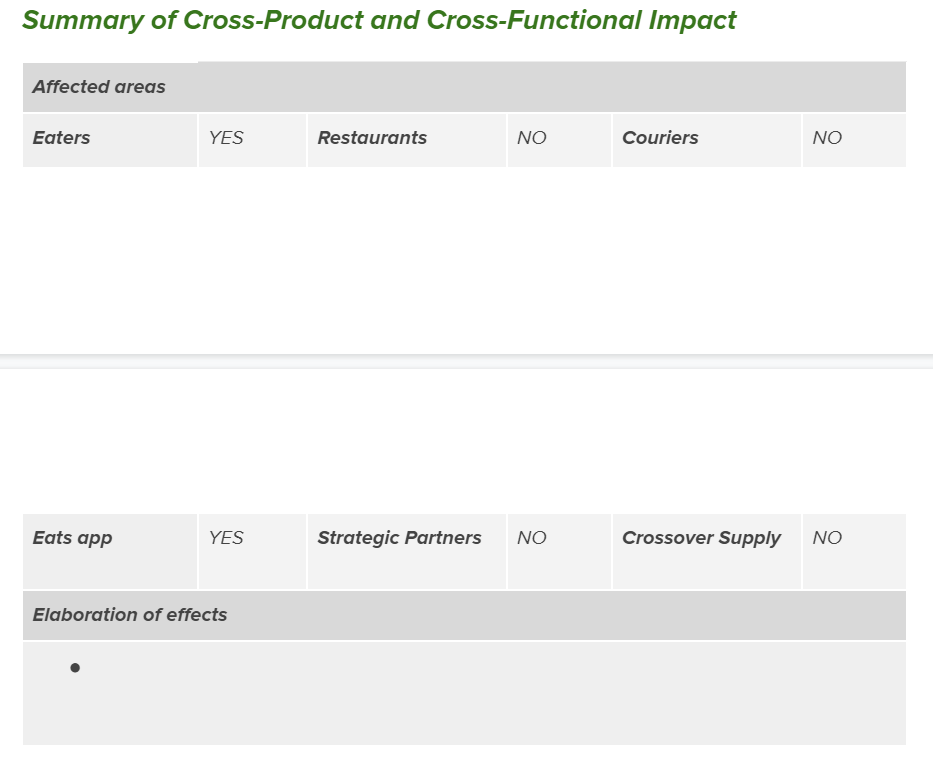The ultimate collection of PRD templates
This is the ultimate collection of PRD templates from great companies like Miro, Figma, Asana, Intercom & many more. In this post I briefly review each, and share my highlights.
I love collecting PRD's because they give an insight into Product Discovery at some of the top teams. In this post I briefly review each, and share my highlights. If you have a great PRD template that I should add, or if there's a newer version, let me know.
PS: Although I do think I covered most PRD templates worthwhile, I hope the cover image conveys that the 'ultimate' is tongue in cheek :)
And about that image: It was AI generated with OpenAI's Dall-E 2 using text prompt: "An illuminated obssessed and happy looking man standing in the middle of huge stacks of documents, digital art"
Index
1. Shapeup Pitch
by Ryan Singer
Shapeup actually isn't just a PRD, but a book on product development. One of the core tenets of Shapeup and this PRD (Pitch) format is to purposefully stay away from detailed specs. This leaves freedom for engineers and designers to make the many decisions that can only be made while building and designing. It does so by keeping solutions high-level. Much of Shapeups' product philosophy is born from Ryan's explorations into the work of Christopher Alexander (pattern languages).
Worth mentioning: Appetite is a concept that I haven't seen in other PRD's. I use it in my own product practice as a tool to guide the design and development process.
There's much more about Shapeup's pitch that I think is brilliant; but I suggest to just read the book.
2. Miro's Product Alignment Document (PAD)
by Farbod Saraf
I love how Miro's PAD is a canvas on Miro itself rather than a doc. Not only is this super on brand, there's value to laying out all the elements in a 2d space like this: It makes it easier to see the elements at a glance, and gives a better feeling of overview. It helps that it looks cool too:
Miro's PAD divides up different elements into 3 stages: Problem framing, Solution framing, Post-launch Recap. With the last stage being entirely focused on reflection & learning from past launches. I think this final step especially is beneficial and often neglected.
3. Lenny's 1-Pager
Nice because it's short. What's even nicer is that it comes packaged with a great post on Lenny's "Three-Step Framework for solving problems". Lenny emphasizes the important of getting clear on the problem and it's value (the demand side), before moving onto the solution space:
As I noted in my last post, I firmly believe that nailing the problem statement is the single most important step in solving any problem. It’s deceptively easy to get wrong, and when done well it’s a superpower of the best leaders. — Lenny Rachitsky
And I agree. The biggest problem in product is that we tend to jump to solutions too soon:

It's when we get most excited about an idea when we skip exploring the context and go straight to the conclusion. But deeply understanding what we are trying to solve first is essential.
In a sense a solution without an understanding of the problem is like making a random key and hoping it will fit a lock. It doesn't make sense. I've written about this at length in my post on Leveling up in Product with the Jobs tree.
4. Kevin Yien's PRD template
by Kevin Yien (previously product at Square)
Firstly, I like how this PRD is divided into 5 stages:
Draft
Problem Review
Solution Review
Launch Review
Launched
Product Discovery work is different in nature across different stages, and this recognizes that. It also just gives a quick overview of the state of a PRD. These 5 stages are the most detailed across the PRD's I compared (Miro's PAD has 3 stages).
What's also interesting is that each stage has a mandatory contributor review section:
I can't decide yet if this feels 'forced' to me or if this is a smart way of making sure everyone is on the same page. I guess it depends on the context and needs some real life testing.
What's awesome is the emphasis on drawing 'a perimeter' as the solution, rather than filling in too many details. This is similar to Shapeup's emphasis on keeping your solution at the right level of abstraction.
3. Think of this like drawing the perimeter of the solution space
4. Draw the boundaries so the team can focus on how to fill it in
— Kevin Yien's PRD Template
Although for some people this template might be a tad long, I really like this one overall.
5. Asana's Spec Template
This template is broken down into 2 stages:
1. Project brief
2. Project Proposal
With the Project brief being more about the problem & opportunity space, and the Project Proposal about how to solve it. At the end of the Project Brief stage there is an interesting note that says "Review Project Brief before continuing":
I like this because like a few other PRD's I mentioned (most notably Lenny's 1-Pager), this emphasizes an alignment on the problem space before going into solutions. This alignment is often lacking in product orgs, and is highly recommended.
They also added a section called "Non Goals". There's no example here, but I assume it's similar to Shapeup's No Go's and is meant to explicitly define what's out of scope. I have experienced this to be useful to prevent solutions going off on a tangent.
6. Intercom's Job Story Template
A template that only focuses on the opportunity context, and doesn't involve any solution finding. I'm guessing they collaborate on the solution in other tools (like Figma). It even has a little note emphasizing this:
Do not add the solution here.
Without the solution, this template is short! It even has a little note at the bottom asking PM's to keep it that way:
An Intermission must always fit on a printed A4 page. If it does not, you haven’t a clear enough view of the problem yet. Keep working on it.
The core of this template seems to be the Job Stories:
For those that don't know, Job Stories are a format to capture customer JTBD's (Jobs To Be Done). This Job Story format was invented by Intercom themselves. No wonder it's at the heart of their template.
At the bottom of the template there is a list of notes that give an insight into the inner workings of Intercom's product org. Here are some:
Always have active and upcoming Intermissions printed in your team area or war room.
1. I guess this is a rule from before Intercom went hybrid?
2. They use the terminology 'war room' and while this might be nitpicking, I do think words matter. Should we see product as a military excercise?
Always use plain simple English, no technical terminology or codenames. Write this document as you would describe the problem to a colleague face to face.
Worth emphasizing. PRD's are often written as if PMs are trying to reach a minimum word count for their high-school essay. Get to the point!
The PM owns the Intermission, but should always always solicit input from the full team.
This feels like it should be implicit. The fact that it's here might indicate this went wrong a couple of times and they are trying to correct the "PM is the CEO" idea.
Overall: Interesting template, from a great product company.
7. Seatgeek's Product Initiative 1 Pager
by Adam Waxman
This PRD has sort of 'minimap' of the stage the PRD is in (built using a table).
Check it out:
I'm not sure how much this actually gets updated, but it gives a nice overview of Seatgeek's discovery process. The process is divided into 4 main stages:
Problem space
Solution space
Observing
Archived
Especially detaching the problem space from the solution space is a great idea, that seems to be a theme in all of the best PRD's I review.
This PRD template also has a dedicated section for alignment to company goals & objectives:
I haven't seen this sofar in other PRD's, and it's a nice way to make sure initiatives tie back to the overarching themes in the company.
8. 1 Page Project Brief
by Steve Morin
This template has a big focus on uncovering assumptions, risks and trying to mitigate them in advance:
This is good. Doing "pre-mortem" or "derisking" excercises can save a lot of wasted time. By calling out individual risks, it enables the team to test these risks indepently, before building the full thing. Recommended to do.
This template has a section to surface dependencies:
I have never used this, but I can imagine it becomes more relevant if your team(s) are in a context with many dependencies. Think about dependencies on:
Platform teams for certain technical support on a feature
API teams
Other teams that overlap in scope, or are building a prerequisite
Etc.
Oh and lastly, it's kind of funny that this is called a "1 Page Project Brief" but is actually 5 pages long :).
9. Figma's PRD
This PRD is in Coda (a doc-tool that enabled media embedding & interactivity). This is cool. It enables the PRD to do things that are impossible otherwise, like:
Embedding Figma files:
Interactive tables, for a "Key Milestones" list:
An interactive Launch checklist:
Because it's in Coda, the user gets this handy outline on the right side, that allows one to get an overview and quickly navigate to a section:
I'm aware that with headings, Google Docs also shows an outline. I just like the UX/UI of the outline in Coda better.
Overall I'm excited by the interactivity that Coda brings to the format. It makes me wonder what other things could be make interactive.
10. Google's PRD template
Nothing much to remark on this (pretty simple) template. What does stick out is that there are 2 fields asking for approval on the legal and privacy side:
I assume this has something to do with the sensitivity of some of Google's work. A company this size can't afford to have mistakes on a privacy or legal side.
11. Microsoft's PRD Template
Similarly simple (and boring) as the Google example. See a pattern here at Big tech? Now I'm curious if Meta has a PRD template. Or is it only available in the Metaverse? :)
12. Uber's PRD Template
This PRD has 2 parts:
Problem definition
Product definition
It starts with a full-page "PRD Checklist" that serves as an overview and maybe a way to keep PMs accountable:
I don't like this template. There's a lot of visually heavy tables, and mandatory fields that seem to constrain, rather than empower, the freedom of the product team.
There's also quite a lot of emphasis on (what seems like detailed) specs:
Merely looking at this PRD gives a sense that Uber's product environment is complex. For example, there's a section dedicated to the impact a product initiative has on all of Uber's products & functions:
Curious if someone from Uber reads this and can confirm that this is up to date, or provide a more recent one.
13. Lean UX Canvas
by Jeff Gothelf
Just like Miro's PAD this is a canvas rather than a doc. The link above is actually to Jeff's blog, where he explains how to use the canvas. Click here to download the PDF, there's also a PPTX version, and if you prefer Miro, you can find the (unofficial) Miro version here.
Accompanied with Jeff's canvas also comes this interesting color coding that classifies the different sections:
There's even a video on how to use it:
I like this canvas as much as I like Jeff's work. It ticks the right boxes (pun intended), and is simple enough to actually be used.
You have reached the end.
This means you are likely to be as obsessed as I am about Product Discovery.
High five!


























This is a great overview! Thanks for putting this together.
I'll link to this page from my product management resource list https://www.digital-product-management.com if you don't mind.
This is just the inspiration I needed as I start writing a PRD. Thanks for putting it together!